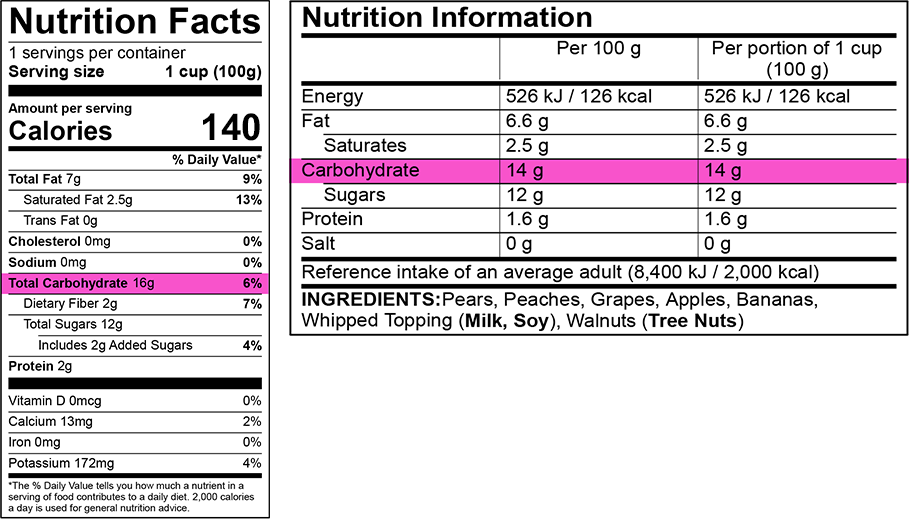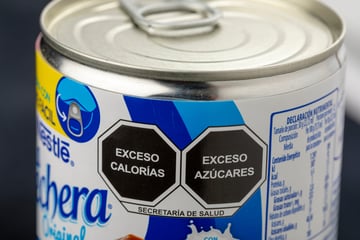Does the carbohydrate value on my label include fiber? The answer is yes… or no! It depends on where you live.
The dictionary defines “carbohydrate” as any of various neutral compounds of carbon, hydrogen, and oxygen — such as sugars, starches, and cellulose. When “carbohydrate” is listed in food composition tables or on Nutrition Facts labels, however, the definition of “carbohydrate” depends on various international standards. Those standards determine which components (sugars, starch, fiber, other) are included in the carbohydrate total.
This blog will look at how carbohydrate values are determined in the U.S., Canada, the EU, and Mexico, and how Genesis R&D Foods handles the differences.
Carbohydrate by Subtraction
In the United States and Canada, carbohydrate values are calculated using what is called “carbohydrate by subtraction.” This means that when a food is chemically analyzed in a lab, the grams of protein, fat, alcohol, water, and ash are subtracted from the total gram weight of the sample, and the amount left over is considered the carbohydrate value. Using this method, the carbohydrate value contains sugars, starch, and fiber, and may also contain small amounts of other compounds that do not fit specifically in one of the other assays. This carbohydrate value is used in food composition tables and for nutrition labeling in the U.S. and Canada.
Available Carbohydrate
For nutrition labeling in the EU and Mexico, carbohydrate values are determined by the amount of “available carbohydrate,” which does not include the fiber component. This value is determined by adding the sugars and starches in the analyzed food sample.
How Genesis R&D Foods Treats the Two Definitions
For accurate international nutrition labeling, Genesis R&D Food Formulation & Nutrition Labeling Software includes value entry fields for both of these carbohydrate definitions and links them with the appropriate nutrition labeling module.

This is important, since whether fiber is included in the carbohydrate total and the calorie calculation could drastically change the label calories reported.
Below you can see a fruit salad recipe in both the U.S. Standard Nutrition Facts Label format and in the EU Nutrition Information Label format. The U.S. label uses 4 calories per gram to calculate the total carbohydrate value (which includes the fiber). The EU label uses 4 calories per gram for the carbohydrate value (available carbohydrate) and 2 calories per gram for the fiber value.
Notice the difference in reported carbohydrates and calories.
The U.S. label uses 4 calories per gram to calculate the total carbohydrate value (which includes the fiber). The EU label uses 4 calories per gram for the carbohydrate value (available carbohydrate) and 2 calories per gram for the fiber value.

Other posts you might be interested in
View All Posts
Food Labeling
32 min read
| June 24, 2021
History of the U.S. Nutrition Facts Label Celebrating 30 Years of Genesis R&D
Read More
Industry Regulations
12 min read
| February 27, 2023
Genesis Foods 11.13: Mexico and Canada Food Label Enhancements Released
Read More
Product Formulation
14 min read
| June 13, 2024

